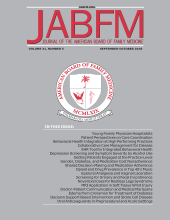Abstract
Introduction: Use of electronic prescribing (e-prescribing) can improve safety and reduce costs of care by alerting prescribers to drug-drug interactions, patient nonadherence to therapies, and insurance coverage information. Deriving these benefits will require clinical decision support based on presentation of accurate and complete formulary and benefit (F&B) and medication history (RxH) data to prescribers, but relatively little is known about how this information is used in primary care.
Methods: This is a multimethod comparative case study of 8 practices, which were selected to ensure practice size and physician specialty variation, implementing a stand-alone e-prescribing program. Field researchers observed prescription workflow and interviewed physicians and office staff.
Results: Before implementation, few prescribers reported using F&B references when making medication choices; all used paper-based methods for tracking medication history. After implementation, some prescribers reported using F&B data to inform medication choices but missing information reduced confidence in these resources. Low confidence in RxH data led to paper-based workarounds.
Conclusions: Challenges experienced with formulary checks and RxH documentation led to prescriber distrust and unwillingness to rely on e-prescribing-based information. Greater data accuracy and completeness must be assured if e-prescribing is to meet meaningful use objectives to improve the efficiency and safety of prescribing in primary care settings.







